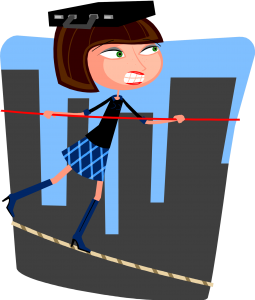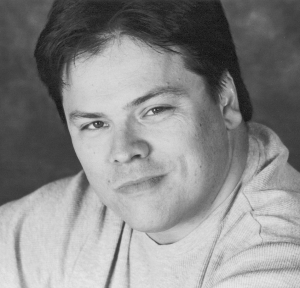 I’m deathly afraid of heights. Going out on the observation platform on the Space Needle in Seattle, I have to plaster myself to the back wall of the central structure and dig my fingernails into the wall when the wind blows. At the Grand Canyon, I have to stay at least six feet back from the low walls that line the trails; none of this blithe waltzing over to the edge and looking down for me.
I’m deathly afraid of heights. Going out on the observation platform on the Space Needle in Seattle, I have to plaster myself to the back wall of the central structure and dig my fingernails into the wall when the wind blows. At the Grand Canyon, I have to stay at least six feet back from the low walls that line the trails; none of this blithe waltzing over to the edge and looking down for me.
So how did I end up on a tightrope?
I’ve discovered that writing is very much like walking a tightrope, placing the feet carefully on the rope itself, hefting a balance beam and making very small corrections to the left or right as necessary. But what, exactly, are we balancing? Continue reading “A Question of Balance”

 We humans seem to thrive on dichotomies. Descartes kick-started the mind/body dichotomy with his famous thought experiment in which he concluded ‘I think, therefore I am’.
We humans seem to thrive on dichotomies. Descartes kick-started the mind/body dichotomy with his famous thought experiment in which he concluded ‘I think, therefore I am’. What happens when you write a book and either people like the characters so much they ask you to continue writing about them, or the story’s too big for just one book and it turns into more than one? Well that, my friend, is what’s called a series.
What happens when you write a book and either people like the characters so much they ask you to continue writing about them, or the story’s too big for just one book and it turns into more than one? Well that, my friend, is what’s called a series.